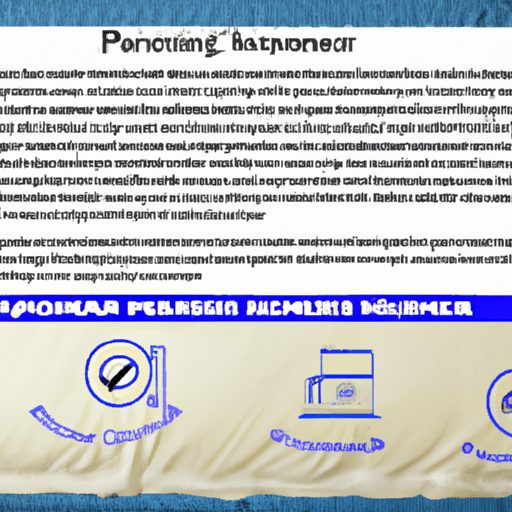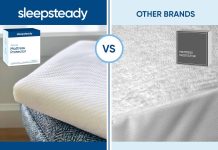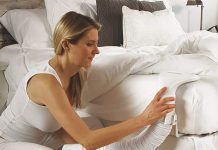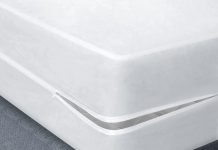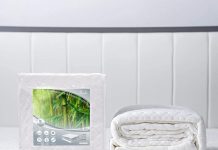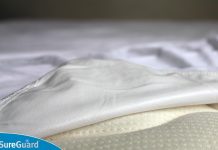Waking up feeling rejuvenated after a good night’s sleep is a wonderful feeling, and one of the key factors in achieving this is keeping our mattress clean. However, the question of how to properly wash a mattress protector can often leave us feeling puzzled. In this article, we will provide you with practical and easy-to-follow steps to ensure that your mattress protector stays fresh, clean, and ready for a restful night’s sleep.
Review contents
Preparation
Before we begin the process of washing a mattress protector, it’s important to take a few preliminary steps. First, remove the mattress protector from the bed and make sure it is free of any sheets or bedding. This will ensure that the protector can be properly cleaned without any obstructions.
Next, it is essential to check the care label on the mattress protector. This label will provide valuable information about the specific washing instructions that should be followed. It may indicate whether the protector is machine washable or if it requires hand washing. Taking the time to read and understand the care label is crucial in order to avoid any damage to the protector during the washing process.
Once the care label has been reviewed, it’s time to inspect the mattress protector for any stains or spills. Identifying and treating stains prior to washing can significantly improve the cleaning results. This step is particularly important as stains can become more difficult to remove if left untreated for a prolonged period of time.
Machine Washing
If the care label states that the mattress protector can be machine washed, here are the steps to follow:
- Check the care label one more time to ensure there are no special instructions.
- Pre-treat any stains on the mattress protector before placing it in the washing machine. This can be done by applying a stain remover directly to the affected area and gently rubbing it in.
- Choose the appropriate settings on the washing machine. It is generally recommended to use a gentle or delicate cycle to prevent any damage to the protector.
- Use a mild detergent specifically designed for delicate fabrics. Harsh detergents or those containing bleach can damage the materials of the protector.
- Wash the mattress protector on a cold or warm cycle, as hot water can cause shrinkage or damage to certain types of protectors.
- Avoid using bleach or fabric softeners, as they can degrade the quality of the protector’s materials and potentially leave behind a residue.
Hand Washing
For mattress protectors that require hand washing, follow these steps:
- Prepare a cleaning solution by filling a basin or sink with warm water.
- Spot clean any stains on the mattress protector using an appropriate stain remover. Gently rub the stain remover into the fabric using a clean cloth or sponge.
- Immerse the mattress protector in the cleaning solution, ensuring it is fully submerged.
- Gently scrub and agitate the protector to loosen any dirt or grime. Be careful not to scrub too vigorously, as this could damage the materials.
- Rinse the mattress protector thoroughly with water until all soap residue is removed.
- Air dry the protector by hanging it up, or use a towel to blot excess moisture if a faster drying time is desired.
Drying
Proper drying techniques are essential to ensure the longevity of the mattress protector. Here’s what you need to do:
- Refer to the care label once again to determine the recommended drying instructions for the mattress protector. Different materials may require specific drying methods.
- If using a machine dryer, set it to a low heat or air dry setting. High heat can cause shrinkage or damage to the protector.
- Alternatively, you can choose to air dry the protector. This can be done by hanging it up or laying it flat in a well-ventilated area.
- While drying, periodically fluff and reshape the protector to maintain its shape and prevent any unwanted wrinkles.
Frequency of Washing
When it comes to how often a mattress protector should be washed, there are a few factors to consider:
- First and foremost, it’s advisable to follow the manufacturer’s recommendations. They are best positioned to provide guidance on the frequency of washing to maintain the optimal condition of the protector.
- Additionally, the usage and environment in which the mattress protector is used can impact how often it needs to be washed. For example, a protector in a guest bedroom may not require as frequent washing as one in a child’s bedroom or a pet-friendly household.
- Regularly inspecting the protector for any visible stains or unusual odors can also help determine when washing is necessary. Promptly addressing any issues can prevent them from becoming more difficult to remove.
Tips and Precautions
Here are some helpful tips and precautions to keep in mind when washing a mattress protector:
- Consider using a mattress cover in addition to the protector. This extra layer can provide added protection and reduce the need for frequent washing.
- Avoid using harsh chemicals or bleach when washing the mattress protector, as these can damage the materials and compromise its effectiveness.
- Do not iron the mattress protector, as the heat can cause melting or warping of the materials.
- When drying the protector, it’s important to avoid exposing it to direct sunlight for an extended period of time. This can lead to fading or deterioration of the materials.
Stain Removal
When faced with a stain on a mattress protector, it’s important to identify the type of stain and use the appropriate stain remover. Here’s what you need to do:
- Start by identifying the type of stain. Common stains include blood, urine, sweat, or spills.
- Once the stain type is determined, select a stain remover that is specifically designed to tackle that particular stain. Follow the instructions on the stain remover packaging.
- Prior to applying the stain remover, it is advisable to spot treat a small, inconspicuous area of the mattress protector to ensure it does not cause any discoloration or damage.
- Apply the stain remover directly to the stained area and gently rub it in using a clean cloth or sponge.
- Allow the stain remover to sit for the recommended amount of time specified on the product packaging.
- Follow the care label instructions to properly wash or hand wash the mattress protector after applying the stain remover.
Dealing with Odors
To combat any unwanted odors on a mattress protector, follow these steps:
- Sprinkle a generous amount of baking soda onto the protector, ensuring that the entire surface is covered.
- Allow the baking soda to sit on the protector for a few hours. This will give it time to absorb any odors.
- After the designated time has passed, use a vacuum cleaner or a soft brush to gently remove the baking soda from the protector.
- Ensure that the mattress protector is completely free from any remaining baking soda before reattaching it to the bed.
Replacing a Mattress Protector
Over time, a mattress protector may become worn out or lose its effectiveness. Here’s how to determine if it’s time for a replacement:
- Assess the wear and tear of the mattress protector. Look for signs of fraying, thinning fabric, or any other visible damage.
- Check for signs of deterioration, such as decreased water resistance, reduced breathability, or weakened elastic.
- If the mattress protector no longer provides adequate protection for the mattress, it is advisable to replace it with a new one. This will help maintain the cleanliness and integrity of the mattress.
Conclusion
Washing a mattress protector is a simple process that, when done correctly, can help prolong its lifespan and maintain its functionality. Whether you choose to machine wash or hand wash the protector, following the care label instructions and using appropriate cleaning techniques is vital. By taking the necessary precautions, regularly inspecting for stains or odors, and promptly addressing any issues, you can ensure that your mattress protector remains clean and in excellent condition for years to come.

